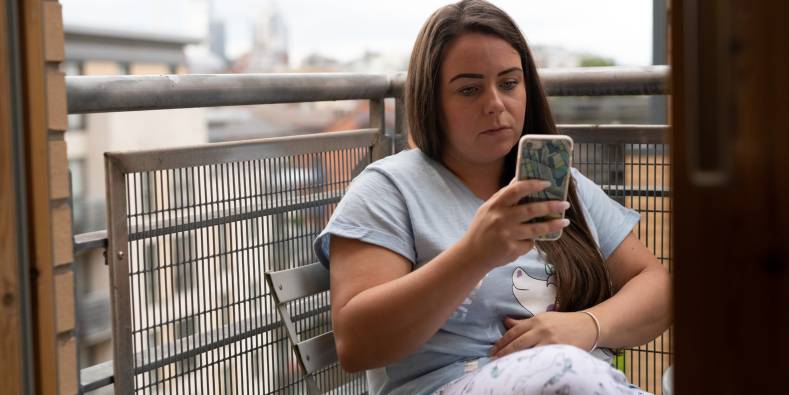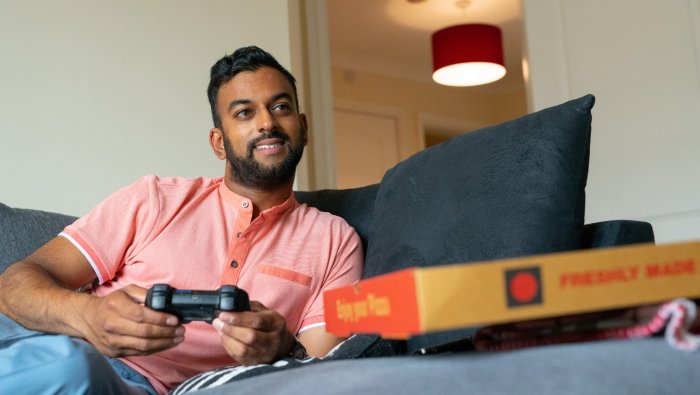Welcome to the MoneyAware blog
Here at MoneyAware we want to promote wise use of credit, to...
Shopping online’s easier than ever. From massive supermarkets to that new age shop your mum gets her tarot reading done at every year, everyone’s got an online store these days.
With online shopping comes online finance, specifically ‘buy now, pay later’. The thing with ‘pay later’ though, is that it eventually becomes ‘pay now’.
Add to it that technology is always getting better at separating us from our money. At what point do our actual desires end, and the Jedi mind tricks of the retail industry start?

Shopify, a company that helps retailers sell online, recently reported 21% of users would abandon checking out online if the process took too long.
The more time we have, the more likely we are to reconsider or change our minds entirely. It’s why companies like Amazon have introduced features like one-click pay.
It’s also why ‘buy now, pay later’ options are popping up and (rather cleverly) tackling one of the biggest drawbacks of online shopping, for retailers and customers alike – not being able to try before you buy.
Hands up if this sounds like you – you’re futzing around on the internet, silently judging a family member’s haircut here, lol’ing at a mascot being unable to get up, again (so relatable), and somehow you stumble onto your favourite clothes store website.
There are so many wonderful garments to choose from, and you can have ANY of them now for no payment…at least not until later. So you buy a couple of things online to try. When it’s time to try ‘em on, it’s a disappointing ‘no’ from the mirror. Boo, dumb mirror! So now it’s time to wait for much-needed refunds.
But wait! Klarna’s promoted as the solution to that problem.
You might have seen the sunglasses icon popping up on ‘high street’ websites, including Topshop, JD Sports and ASOS.
Full transparency – I know exactly how this works because I’ve been suckered into it myself, several times now researched this post thoroughly for you, our MoneyAware readers.
With Klarna, choose ‘Pay later’ at the checkout and in one click you’re done. Depending on which retailer you’re spending with, you’ll have between 14 and 30 days to try your items and return them at no extra cost. They’ll tell you this information at the checkout.
Or, if you decide to keep your items, you’ll be prompted before your time is up to pay through the Klarna website or app.
Or, if you’re making a larger purchase you can ‘slice it’ and spread the cost between 3-36 months. This can be interest-free or will have a maximum simple interest rate of 18.9% which the retailer will set.
Klarna AB (that’s their registered name) is a Swedish bank that offers payment solutions and technology to retailers. When you use ‘pay later’ or ‘slice it’, they take a small fee from the retailer.
If your Pay Later payment is, well…late, Klarna says you won’t be charged any fees, interest or penalties. However, if you ‘Slice It’, depending on the retailer you may be charged up to 18.9% in interest.
In either case, late payments can negatively affect your credit rating.
Yes. Every time you apply to ‘slice it’ Klarna performs a ‘hard’ credit check which anyone checking your report can see. Hard checks remain on your file for 12 months, whether approved or not.
Even if you pay in full and on time, several hard checks can be an indicator to lenders that you’re not managing credit responsibly. Your score can be impacted negatively, making it harder for you to take out credit in the future.
With pay later, Klarna performs a ‘soft’ credit check which doesn’t appear on your file. Your score isn’t affected so you can apply for as many as you want. However, if you’re late with a payment, your credit file could be affected.
It’s all too easy to overestimate what you can afford with these types of services. A report by the University of Reading highlights how ‘pay later’ not only defers payments but also ‘helps’ customers overcome feelings of guilt or regret over how much they’re spending.
Interestingly, the report states that for those on a higher income these services have little impact on their online spending habits. It seems millennials are more susceptible to these offerings as the simple and unassuming pizza icon continues to appear across their favourite retail websites.
Further data from Finder.com goes onto suggest that a whopping 95% of millennials admit to impulse shopping, with almost 20% saying it’s a daily habit for them.
A quick Twitter search shows an alarming number of young people jovially expressing how much they continue to spend through Klarna, despite the fact they probably can’t afford to. Crying face emojis are awash and (my favourite saying and root of most of my problems) “treat yourself”.
Now you’re in the know, before you next check out, check yourself and ask these three questions.
Hopefully you’ll save yourself some cash, keep your credit report in top shape and create good spending habits.
Have you used pay later services? Did you find them useful or did you find it too easy to overspend? Let us know in the comments section.